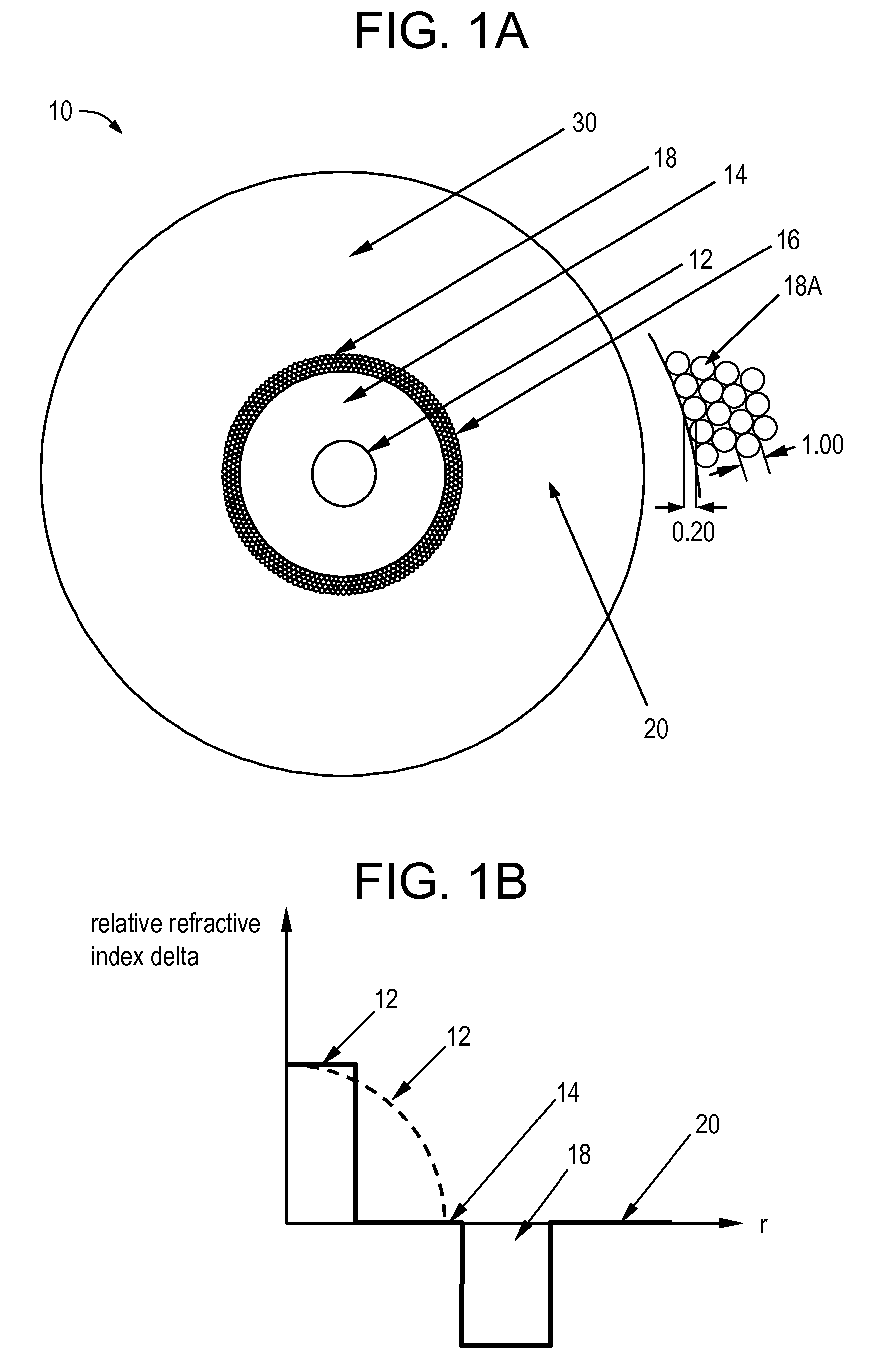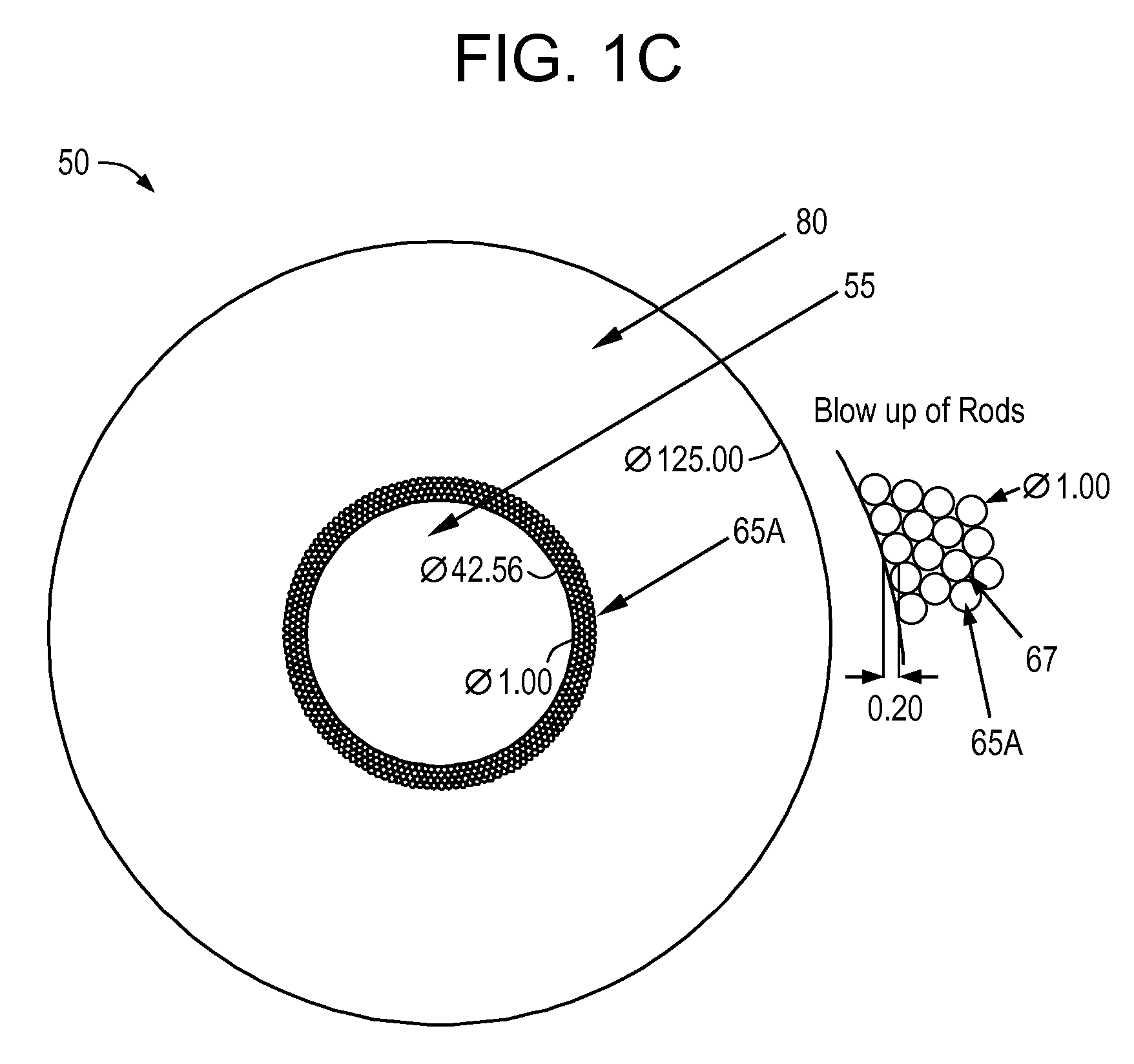Optical fiber and a method for making such
a technology of optical fiber and cladding, which is applied in the field of optical fibers, can solve the problems of high cost, large precision, and high cost of preform components such as the overclad tube and the small glass tube surrounding the core rod(s), and achieve the effects of low cost, high cost and high cos
- Summary
- Abstract
- Description
- Claims
- Application Information
AI Technical Summary
Benefits of technology
Problems solved by technology
Method used
Image
Examples
example 1
[0062]For example, in order to produce a fiber similar to that of FIG. 1A, the core blank 55 was wrapped in a ribbon 60. The ribbon 60 contained a plurality of glass rods 65A. This ribbon was wrapped around the core blank 50 four times, producing the wrapped preform. The wrapped preform was heated by a flame torch to soften the glass sufficiently so as to tack the rods 65A to each other and to the core blank 55 in order to produce the core blank assembly 70. This core blank assembly was then redrawn to a smaller diameter cane 75, while maintaining the relative interstitial spaces between the glass rods. The cane 75 was than overclad with glass soot (in this example it was pure silica soot, but other dopants may also be present, e.g. chlorine, germanium, fluorine, boron and phosphorus) and consolidated to form the final consolidated glass preform blank 50. It is noted that the soot deposited on the cane 75, after consolidation, corresponds to the cladding 30 of fiber 10 of FIG. 1A.
[0...
PUM
| Property | Measurement | Unit |
|---|---|---|
| outer diameter | aaaaa | aaaaa |
| temperature | aaaaa | aaaaa |
| temperature | aaaaa | aaaaa |
Abstract
Description
Claims
Application Information
 Login to View More
Login to View More - R&D
- Intellectual Property
- Life Sciences
- Materials
- Tech Scout
- Unparalleled Data Quality
- Higher Quality Content
- 60% Fewer Hallucinations
Browse by: Latest US Patents, China's latest patents, Technical Efficacy Thesaurus, Application Domain, Technology Topic, Popular Technical Reports.
© 2025 PatSnap. All rights reserved.Legal|Privacy policy|Modern Slavery Act Transparency Statement|Sitemap|About US| Contact US: help@patsnap.com



